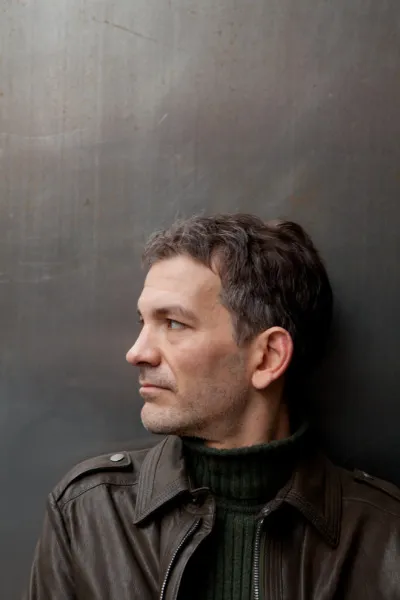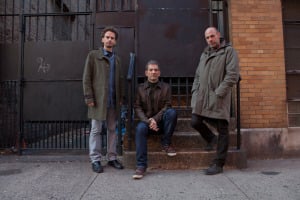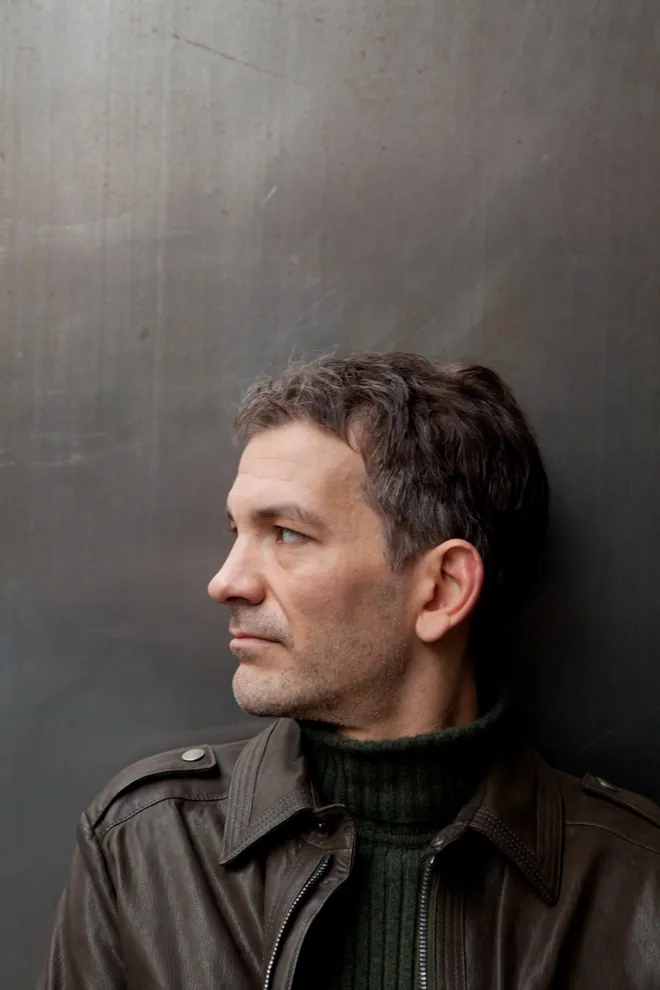
Brad Mehldau, one of the finest jazz pianists on the scene right now, will be taking the stage at Bing Concert Hall on Friday night with his trio – Stanford alum Larry Grenadier ’89 on bass and Jeff Ballard on drums – as part of Stanford Live’s Student Picks series.
Although perhaps best known for turning pop songs from The Beatles, Radiohead, Bob Dylan and Sufjan Stevens into jazz standards, Mehldau also plays the old standards of Irving Berlin and Cole Porter. He’s also an accomplished composer himself: His revelatory jazz album “Highway Rider” featured orchestral music, and he’s composed many gems for his trio, including on their most recent album of original songs, “Ode.” One of Mehldau’s trademarks is his ability to completely separate what he’s doing with his left hand from his right hand, to play with ostinatos, and to improvise gorgeous and complex solos.
In preparation for his performance on Dec. 5, The Stanford Daily conducted an email interview with Mehldau, discussing his current projects, his love affair with his Steinway piano, what’s on his active playlist, and how he approaches his craft.
The Stanford Daily (TSD): You must have quite a few pianos in your personal collection. How many do you own? Are they all Steinways? What vintage are they and how do you choose them?
Brad Mehldau (BM): I have only one Steinway, a 1949 New York B. It is my beloved. Her name is Stephanie. My wife understands. I also have a Baldwin upright and a Yamaha C3, and I’m quite happy with both of them.
TSD: What is currently on your active playlist? What music are you listening to?
BM: Tommy Jackson, “Fiddle Classics and Square Dancing”; Jacob do Bandolim, “Mandolin Master of Brazil Original Classic Recordings Vol. 1”.
TSD: One of the very unique things about your repertoire is your ability to find interesting pop songs to bring into the jazz standards repertoire. How do you spot these? How do you decide what would make for good jazz repertoire? And are there different criteria for, e.g., a piece you’d play solo vs with the trio? What are those criteria? Is it about melody or structure or narrative or…?

BM: It’s always first and foremost the emotional connection with the song — I’m a fan of the song, and that makes me want to play with it; I have to fall in love with it. And then I grapple with those criteria you mention, and it’s trial and error — sometimes it works, sometimes it doesn’t.
TSD: Are we ever going to get your take on a Taylor Swift song?
BM: I’m not really hip to her music but I think it’s very cool that she opted out of Spotify. I’m of the Stevie Nicks generation.
TSD: When I interviewed Chris Potter for The Daily last year, he talked about the difference between having pieces very arranged and worked out in advance vs. left open with more room for improvisation. In your trio, what is your approach to this? Is there somewhere on the spectrum you always want to be? Or do you look for a mix of very composed vs. very loose? How do you strike that balance?
BM: That’s a good question. For me it’s always in negotiation, the improvisation and the composition. One thing I can say that’s usually the case is that within a given set in a performance, some things will be more arranged and written, and others will be looser and more focused on the collective improvisation.
TSD: One of the amazing things about your playing is the way that you can completely separate what you’re doing in the right hand from what you’re doing in the left hand, so that you’re playing two parts totally independently. How did you develop that ability? And how does having this tool available to you affect how you approach improvisation and composition?
BM: I started out with a classical training when I was a kid and then got into jazz in my teen years. When I was in my early twenties, it occurred to me that my left hand was weaker than it had been when I was playing classical repertoire regularly. So I made it a mission to build strength again, and then it became more of a musical, expressive device.
TSD: You’ve toured as a duo with Chris Thile, who performed with Edgar Meyer at Stanford in September. How did that collaboration start? Has that had any effect on your repertoire? Do you have any plans to record? And any chance of a West Coast performance date in the future?
BM: Chris and I were both fans of each other for a while and I’m not even sure which one of us had the idea to do something together. It’s been a great experience. We just did a tour in Europe and will definitely record in the future, and yes we have to bring it to Cali for sure.
TSD: You toured with Joshua Redman as a duo a couple of years ago, including to San Francisco. Do you have plans to reunite as a duo to tour and/or record?
BM: Josh and I have been kicking around some ideas for recording for a couple years now, and it’s slowly coming together. Josh has been a huge inspiration and influence on me as a musician for quite some time — one of the Bay Area’s finest ever!
TSD: You’ve been playing within the trio format as a band leader for almost two decades now. What about the trio keeps drawing you back? What’s the tradeoff between getting new ideas from new musicians and really understanding and communicating with a core group?
BM: For me at least the two work in tandem — I get fresh inspiration from working with other people and try to bring that back into the fold of what I do with Larry and Jeff. I’m sure some of what I was just doing with Chris Thile, for instance, will find its way into a tune I write for us, or an approach.
TSD: Similarly, how do you tradeoff working in a group versus playing solo jazz piano? What do you see as the main value of each?
BM: Of course, the three of us are very aware of the audience when we play together, but the audience is witnessing our conversation to an extent. In the solo context, perhaps the communication with the audience is more direct. I don’t think that’s better or worse, just different.
TSD: A couple of years ago, you did a four-night jazz residency at SFJAZZ where you played with four different groups (solo, your trio, Mehliana, and a piano duo) — I was at three of them, all amazing. How do each of those groups inform each other, and do you find something new and interesting from playing in a different configuration each night?
BM: That was quite a challenge, but so cool, to play in the new room there. SFJAZZ is really world class — it sets the standard for jazz festivals in the States. Well, the configuration was so different those nights that it was challenging enough to just keep my head on straight. Sometimes we find the most focus when we’re really called upon to multi-task like that.
TSD: “Taming the Dragon” seems like your venture into the realm of trance/electronica, and you blew away the competition. The beat grooves hard, as is expected in these genres, yet you bring your brilliant texturing and layering style with you. The voice(s) of the melody sound different than in your trio jazz or orchestra works. Was that deliberate, and how did that come about? Were you looking to develop a new voice for this genre? Were you influenced by trance and electronica? If so by whom? How did you end up making the transition into this new genre?
BM: I really wanted to do something with Mark Guiliana, who is one of my favorite musicians, and we had talked about doing something for a while. It came out kind of trancy. Mark and I draw from a variety of influences. Mark is influenced by electronic music from the last 20 years, like dub-step, for example; I was probably drawing on a lot of rock music from the 70’s that I grew up with — the trancelike vibe of Pink Floyd, for example, or the way the band Rush used synths. And some Herbie Hancock, for sure.
TSD: How, if at all, do you change your playing to adapt to different halls or pianos? For example, does the amount of echo or the degree of crispness of sound in a concert hall change how you play and how you construct solos? Bing Concert Hall, where you’ll be playing at Stanford, is known for its echo, and I’m wondering if and how that might affect your choice of repertoire or approach to playing.
BM: Thanks for the heads up! Yes, we usually adjust as we play, and within the first 10 minutes or so we kind of calibrate to the room. We like to use minimal amplification in the trio context, so hopefully we’ll find a way of “playing the room,” as they say.
Brad Mehldau performs Dec. 5 at 7:30 p.m. at Bing Concert Hall. Student tickets are available for $15, and regular admission ranges from $30-65. It’s almost sold out, but expect some additional tickets to be made available this week and the day of the performance.
Contact Alexandra Heeney at aheeney ‘at’ stanford.edu.
